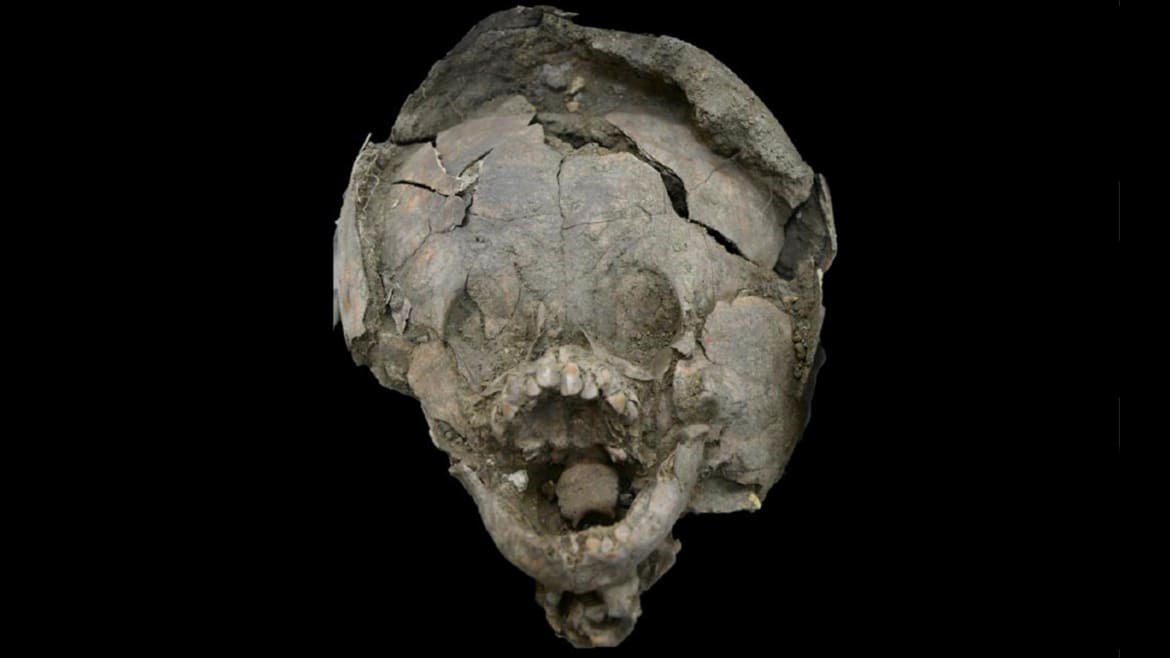The Mysterious Case of Babies Buried With Helmets of Other Children’s Skulls

A team of archaeologists working in Ecuador recently discovered something unexpected. At a funerary site dating to around 100 B.C. they unearthed the remains of two babies that were buried with protective “helmets” made from the skulls of older children. So far these burial sites are the only known evidence of using children’s skulls as funerary headgear. Reporting of the discovery has focused on the macabre and gruesome nature of the find, but a closer look shows that we aren’t as far from ancient Ecuador as we might think.
Researchers from the University of North Carolina at Charlotte and the Universidad Técnica de Manabí in Ecuador made the discovery while excavating at the ritual complex of Salango on the central coast of the country. They published their findings in the academic journal Latin American Antiquity. The two infants were aged about 18 months and 6-9 months when they died; the children whose skulls encased their own were aged 4-12 years and 2-12 years, respectively. The modified skulls of the older children were placed around the heads of the infants so that the baby’s “face looked out and through the cranial vault of the second.” Almost like some kind of modern protective helmets. The discovery raises a number of questions: To whom do these remains belong? Why would people do this? And, what happened to these children?
Heads don’t only make appropriately shaped helmets, they had a particular significance in ancient South American culture and, indeed, globally. After all, our heads are both critically important to life and a powerful tool for recognition and identification. As the archaeologists (Sara Juengst, Richard Lunis, Abigail Bythell, and Juan José Aguilu) write in their study, in South American culture isolated crania, or “trophy heads,” were fairly common. They are generally viewed to be the heads of ancestors or war victims. Heads like these could serve as symbols of the past and of future generations, or as emblems of power and domination. Heads of children, however, were much less prevalent. As Juengst, a professor of anthropology at UNC-Charlotte, told The Daily Beast, “trophy heads [are discovered] pretty regularly but never worn in this manner. And our literature review didn’t turn up anything like this anywhere else in the world either.” These nested skull burials are, so far, unique.
